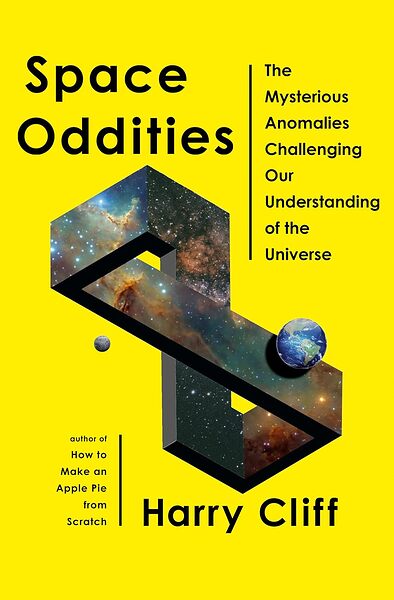Looking for a good read? Here is a recommendation. I have an unusual approach to reviewing books. I review books I feel merit a review. Each review is an opportunity to recommend a book. If I do not think a book is worth reading, I find another book to review. You do not have to agree with everything every author has written (I do not), but the fiction I review is entertaining (and often thought-provoking) and the non-fiction contain ideas worth reading.
Book Review
When Anomalies Challenge the Model
Reviewed by Mark Lardas
March 31, 2024
“Space Oddities: The Mysterious Anomalies Challenging Our Understanding of the Universe,” by Harry Cliff, Doubleday, March, 2024, 288 pages, $29.00 (Hardcover) $14.99 (E-book)
Isaac Asimov once wrote “The most exciting phrase to hear in science, the one that heralds new discoveries is not ‘Eureka!”(I found it!) but ‘That’s funny. . .’” Inconsistencies lead to investigations which uncover new knowledge.
“Space Oddities: The Mysterious Anomalies Challenging Our Understanding of the Universe,” by Harry Cliff is a book filled with 200 years of these “That’s funny. . .” moments. It shows how weird inconsistencies led to great discoveries.
The book looks at the cutting edge of physics at both ends of the scale, from sub-atomic particle physics to cosmology about the size and origins of the universe. While these topics have been covered in other recent books, Cliff looks at the race for discovery as much as the science itself. It is science as competitive sport (a friendly competition – usually).
He also shows how anomalies in standard models lead to scientific breakthroughs. The oldest example examined is planet Vulcan’s rise and fall. A planet who orbit theoretically fell between the Sun and Mercury, it was hypothesized in 1859 based on Mercury’s orbital irregularities. The science created true believers – until Einsteinian physics provided a better explanation.
Cliff fills ten chapters with these stories. An inconsistency in an accepted model is noticed. Background radiation is off. A particle’s weight differs diminutively from theory. Often there is ghost-like, almost immeasurable error. Experimental investigation follows. Theoretical scientists create new equations to explain how the anomaly can fit into the accepted model.
Sometimes (as with Einstein’s General Relativity) a revolution occurs. More often the anomaly turns out to be observational error. “Space Oddities” gives examples of both. Regardless the results go into the current standard model. He shows how and why it gets strengthened and modified.
Cliff is part of the story. He is a researcher at CERN, working with the Large Hadron Collider. In one chapter he describes his own adventures in particle physics, both his successes and failures. He also places them in context with other efforts in the same field.
The book’s theme is straightforward. Believing the science is settled is a trap. So is believing it is never settled. When an inconsistency is found, investigation is necessary, but the investigation requires an open mind, a willingness to accept the results regardless of whether they agree with a researcher’s preconceptions. If “Space Oddities” demonstrates anything, it is that the Creator enjoys playing practical jokes on unwary scientists.
Mark Lardas, an engineer, freelance writer, historian, and model-maker, lives in League City. His website is marklardas.com.
